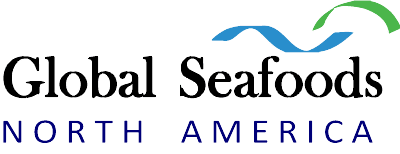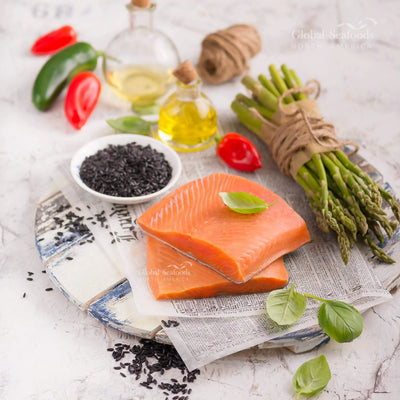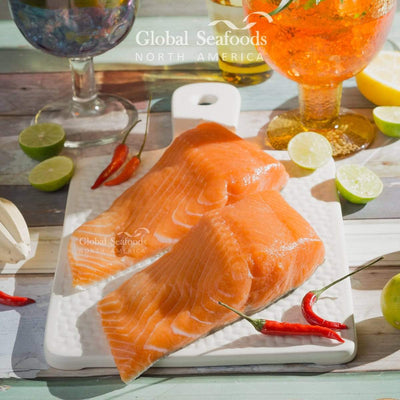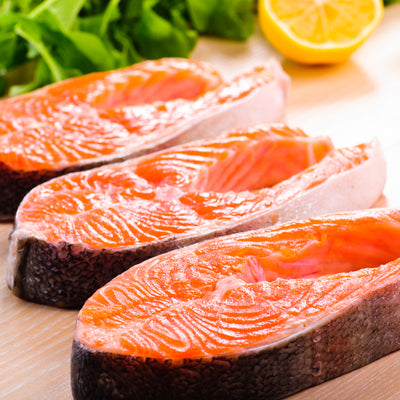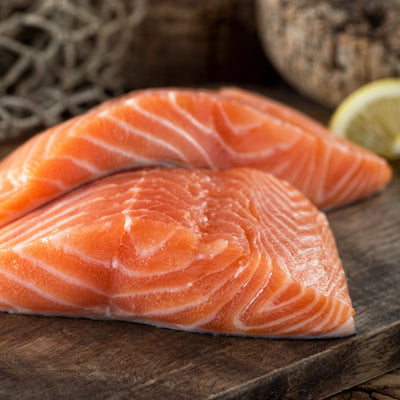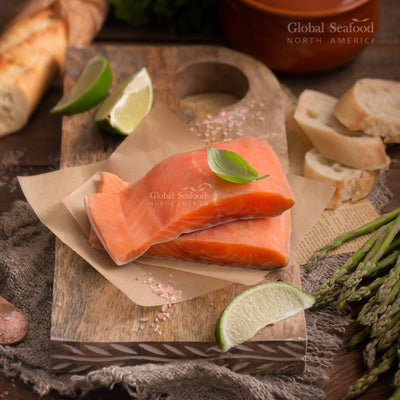The History of Alaska Salmon Fishing – Tradition, Sustainability & Future

The History of Alaska Salmon Fishing: Tradition, Sustainability & The Future
Alaska's salmon fishing industry is a cornerstone of the state's economy, culture, and ecosystem. For centuries, Native American and Indigenous Alaskan communities have relied on salmon as a vital food source and cultural symbol. Over time, commercial fishing and aquaculture have reshaped the industry, raising concerns about sustainability, habitat preservation, and the future of wild salmon populations. In this article, we explore the history of Alaska salmon fishing, its transition to commercial operations, and the efforts being made to ensure its future.
The Deep-Rooted Traditions of Alaska Salmon Fishing
Native American and Indigenous Alaskan Fishing Practices
Long before the commercial fishing industry existed, Indigenous Alaskans, including the Tlingit, Haida, and Yup'ik people, relied on salmon for survival. They developed advanced fishing techniques such as:
- Fish Traps & Weirs – Used to catch large quantities of salmon while allowing younger fish to escape, ensuring sustainability.
- Smokehouses & Drying Racks – Used to preserve salmon for winter, allowing long-term storage without refrigeration.
- Spiritual & Cultural Significance – Salmon was considered a gift from nature, and ceremonies were held to honor their return each year.
These early practices promoted sustainable fishing, ensuring that salmon populations thrived for generations.
The Rise of Commercial Salmon Fishing in Alaska
The Boom of the 19th & 20th Century
The late 1800s and early 1900s marked the rapid expansion of Alaska's commercial salmon industry. Key developments included:
- Introduction of Salmon Canneries (1878) – The first salmon cannery opened in Southeast Alaska, allowing for large-scale salmon processing and export.
- Growth of Fishing Fleets – As demand for Alaskan salmon grew, fleets of boats, including gillnetters and seiners, expanded fishing operations.
- Overfishing & Habitat Destruction – The aggressive harvesting of wild salmon, combined with habitat destruction from logging and mining, led to population declines.
By the mid-20th century, it became clear that Alaska's wild salmon populations were at risk, prompting the need for stricter regulations.
Government Regulations & Sustainable Fishing Efforts
To combat overfishing and preserve wild salmon, the Alaska Statehood Act (1959) granted the state control over its fisheries, leading to the creation of:
- The Alaska Department of Fish and Game (ADF&G) – Established to regulate and manage fisheries based on scientific research.
- Limited Entry Fishing Permits (1973) – Designed to prevent excessive fishing by controlling the number of commercial fishing licenses issued.
- Habitat Protection & Conservation Programs – Efforts to restore salmon-spawning habitats, including dam removals and reforestation projects.
These efforts helped revitalize salmon populations and positioned Alaska as a global leader in sustainable fisheries management.
Modern Aquaculture & The Debate Over Farmed vs. Wild Salmon
The Rise of Salmon Farming
While Alaska strictly prohibits fish farming in its waters, salmon aquaculture has expanded in other regions, particularly in:
- Norway & Chile – The world's leading producers of farmed Atlantic salmon.
- Washington & British Columbia – Major hubs for North American salmon farming.
Farmed salmon accounts for over 70% of the global salmon supply, making it an accessible and affordable alternative to wild-caught salmon.
Wild vs. Farmed Salmon: Key Differences
| Factor | Wild Alaskan Salmon | Farmed Salmon |
|---|---|---|
| Diet | Natural diet of smaller fish, krill, and plankton | Processed feed pellets |
| Color | Deep red due to natural astaxanthin from krill | Artificial coloring added to feed |
| Omega-3 Content | High levels of natural omega-3s | Lower omega-3s due to diet |
| Sustainability | Strictly regulated, supporting ecosystem balance | Concerns over water pollution, antibiotic use, and disease transfer to wild fish |
| Taste & Texture | Firm texture, rich flavor | Softer texture, milder taste |
While farmed salmon provides an economical option, many seafood lovers prefer wild-caught Alaskan salmon for its superior taste, nutritional value, and eco-friendly harvesting methods.
Sustainable Fishing Practices & The Future of Alaska Salmon
Efforts to Protect Wild Salmon Populations
Alaska has implemented some of the world’s strictest sustainability measures, including:
- Catch Limits & Quotas – Ensuring only a sustainable number of salmon are harvested each season.
- Selective Fishing Methods – Using fish wheels and dip nets to minimize bycatch.
- Habitat Restoration – Protecting spawning streams and preventing pollution from industrial activities.
How Consumers Can Support Sustainable Salmon Fishing
If you want to support the sustainability of Alaska salmon, consider:
- Buying Wild-Caught Alaskan Salmon – Look for labels like Marine Stewardship Council (MSC) or Alaska Seafood Marketing Institute (ASMI) certification.
- Supporting Sustainable Seafood Brands – Choose seafood retailers that prioritize ethical fishing practices.
- Avoiding Farmed Salmon from Unsustainable Sources – Some salmon farms contribute to habitat destruction and water pollution.
By making informed choices, consumers can help protect Alaska’s salmon industry for future generations.
Conclusion
The history of Alaska salmon fishing is a testament to both tradition and resilience. From the sustainable fishing practices of Indigenous Alaskan tribes to the modern commercial fishing industry, salmon has remained a vital resource. With ongoing conservation efforts and consumer support for ethical seafood choices, Alaska’s wild salmon populations can continue to thrive for years to come.
Whether you’re enjoying fresh sockeye, king, or coho salmon, remember that every choice you make helps sustain Alaska’s fishing heritage.
FAQs About Alaska Salmon Fishing
1. Why is Alaskan salmon considered the best?
Alaskan salmon is widely regarded as the best due to its wild, natural diet, firm texture, and high omega-3 content. It is also sustainably harvested under strict regulations.
2. What are the most popular types of Alaskan salmon?
The five major species of Alaskan salmon are:
- Sockeye Salmon – Known for its deep red color and rich flavor.
- King (Chinook) Salmon – The largest and most prized for its high-fat content.
- Coho (Silver) Salmon – Milder flavor, great for grilling.
- Pink Salmon – The most abundant, often used in canned salmon.
- Chum Salmon – Known for its firm texture and roe production.
3. Is wild-caught salmon better than farmed salmon?
Yes, wild-caught salmon is generally healthier, more sustainable, and has a better flavor than farmed salmon. However, responsibly farmed salmon can be a more affordable alternative.
4. How can I ensure I’m buying sustainable Alaskan salmon?
Look for certifications like MSC, ASMI, or Best Aquaculture Practices (BAP) when purchasing seafood. These labels indicate that the fish was harvested sustainably.
5. Can you fish for salmon in Alaska as a visitor?
Yes! Alaska offers some of the best salmon fishing opportunities for visitors. Popular locations include Kenai River, Bristol Bay, and Kodiak Island. Visitors must obtain a fishing license and follow local regulations.
Get Premium Wild Alaskan Salmon Today!
If you're looking for the best wild-caught Alaskan salmon, check out these high-quality seafood options:
🔗 Buy Fresh Sockeye Salmon
🔗 Shop King Salmon Fillets
🔗 Explore Coho Salmon Options
🔗 Browse All Wild-Caught Salmon
For more seafood insights and recipes, subscribe to Global Seafoods YouTube Channel!
Also in News

How to Make Sea Bream Sushi With Dry-Aged Tuna & Crab Roll — Step-by-Step With Chef Joshua
A complete guide to making Sea Bream sushi at home, including filleting, curing, slicing, and building a Dry-Aged Tuna & Crab sushi roll. Chef Joshua shares professional tips for restaurant-quality results.

Boiled Crab for Game Night: Everything You Need for a Perfect Seafood Party
Take your game night to the next level with a Boiled crab party. Learn the best recipes, cooking tips, and hosting hacks for a memorable seafood feast.

Boiled Crab for Date Night: A Romantic Guide to the Perfect Seafood Feast
Make your next date night unforgettable with a romantic Boiled crab experience. This guide covers everything you need to know, from ambiance to the best crab varieties.
